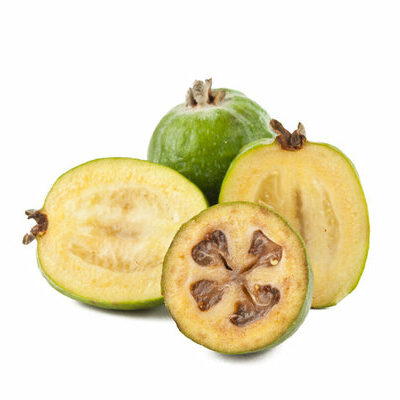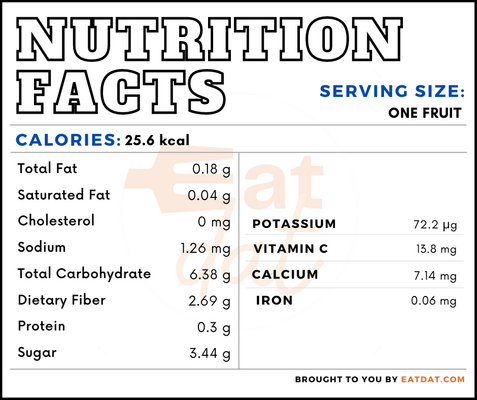
Feijoa
also known as Pineapple guava and Guavasteen
What is Feijoa?
Feijoa is a fruit native to South America. It is the fruit of the feijoa sellowiana tree, which is grown both ornamentally and for its edible fruit. It has a green outer cover and white juicy flesh inside. The fruit has a sweet aroma similar to that of pineapple, and a similar flavor.
- Apart from consuming the fruit raw, it can also be used in preparing desserts, baked goods, jams, and cocktails.
- The fruit itself is named after the director of the Museum of Natural History in Pelotas, Joam da Silva Feijoa.
Some of the popular fruits of South American origin include:
- Araza
- Cherimoya
- Spondias Mombin
- Curuba
- Maracuya
- Lulo
- Papayuella
- Tamarillo
- Uchuva
- Acai Palm
- Feijoa
- Maqui Berry
- Jaboticaba
- Mortiño
Origin of feijoa
The feijoa is native to South America and grew wild in the mountains of the countries of Brazil, Uruguay, Paraguay, and Argentina. It was brought to Europe by de Wette to Switzerland and was established at the Botanic Garden of Basle. The first fruiting plant was planted by the French botanist, Edouard Andre, in his garden in 1897. However, it is New Zealand, where the fruit received the most attention. Introduced by the European settlers, it became popular as an ornamental plant in 1930 and later became popular as a fruiting plant.
Nutrition
Nutritional profile for feijoa (1 fruit, raw):

Feijoa is rich in calcium, magnesium, phosphorous, potassium, sodium, vitamin C, folate, cryptoxanthin, lycopene, vitamin A (IU), lutein + zeaxanthin, and vitamin K. The edible skin of the fruit has significantly high amount of antioxidant flavonoids and vitamin C. Regular consumption may help combat diseases like cancers and diabetes. Furthermore, the fruit has anti-inflammatory, antimicrobial, antidepressant, and antioxidant properties.
Commercial production
The main producers of this fruit are New Zealand, Colombia, Chile, Brazil, Uruguay, the USA, France, Italy, Russia, Georgia, Azerbaijan, Armenia, Turkey, Israel, Australia, Japan, and China. The most common variety of this fruit is the acca sellowiana, which is self-pollinating. These fruits require cool climate with moderate summers. Well-drained and fertile soil is required for a good harvest.
Freshly picked feijoas may be stored in the refrigerator for up to one month. At room temperature, they will last for up to 5 days.
Feijoa recipes
Feijoa can basically be used to prepare any dish that contains fruit. It can replace other fruits like bananas or apples in different dishes. Here are a few recipes:
- Feijoa Almond Loaf
- Crumble Slice
- Muffins
- Jam
- Shortcake
- Pork Chops
- Wild Forest Honey Cake
- Chutney
- Ice Cream
FDA regulations
The FDA describes most fresh fruits as raw agricultural commodity. However, feijoa is not specifically included in this list.
References
- Yasmin Noone, Feijoa is the superfruit you’ve probably never heard of (unless you’re from New Zealand), SBS
https://www.sbs.com.au/food/article/2020/01/16/feijoa-superfruit-youve-probably-never-heard-unless-youre-new-zealand - Holly Naokes, How to Grow Feijoas, Hoselink Gardening Solutions
https://www.hoselink.com.au/blogs/gardening/how-to-grow-feijoas - Phan, Anh Dao Thi et al. “Nutritional Characteristics and Antimicrobial Activity of Australian Grown Feijoa (Acca sellowiana).” Foods (Basel, Switzerland) vol. 8,9 376. 1 Sep. 2019, doi:10.3390/foods8090376, https://www.ncbi.nlm.nih.gov/pmc/articles/PMC6770449/
